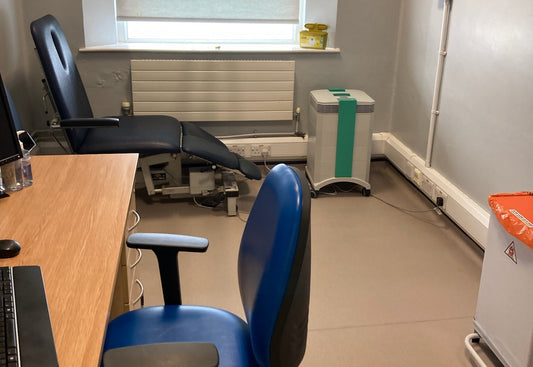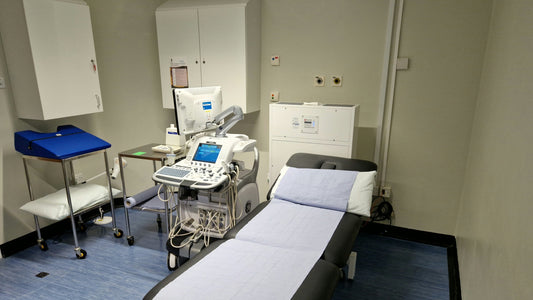Since the birth of the first baby from in-vitro fertilisation (IVF) in 1978, Assisted Reproductive Technology (ART) has grown in importance as techniques and success rates have continued to improve. All cells, including gametes (sperm and egg) and embryos (bundles of cells), are very sensitive to laboratory conditions of temperature, pressure, the composition of the medium they are handled and grown in, and also air quality. Air quality in IVF labs can have significant effects. Both indoor and outdoor pollution can have a drastic impact on the embryo and the success rate of IVF treatments. An embryo in a laboratory setting is very vulnerable to outside influences because it lacks the protection of the mother's body. This is even more significant given the trend to grow the embryo in the lab to the five days (blastocyst) stage which is thought more likely to achieve a successful pregnancy when implanted than earlier embryos. Therefore, managers of IVF labs should ensure optimal usage of laboratory air cleaning solutions to limit airborne contamination as much as possible.
How does air quality in IVF labs affect treatment success rates?
Smokers need twice as many IVF attempts to achieve success compared to non-smokers. That simple fact tells us straight away that pollution is a potent factor in the IVF process. A landmark paper by Cohen et al in 1997 discusses how just relocation of their lab and the use of adhesive during floor replacement in a neighbouring building were enough airborne contamination to lower pregnancy rates. Further experiments on the impact of floor tile adhesive on the development of mouse embryos shed some light on the second observation – the product arrested the growth of more than 90 per cent of the embryos at the two-cell stage. Another study, from Brazil, showed that exposure to another airborne contaminant - i.e. particulate matter (PM10s)- showed an increased chance of miscarriage among women after both IVF and natural conception. More recently, the presence of nitrogen dioxide pollution (likely from traffic exhausts) both at a woman's home and around an IVF lab has been linked with lower IVF birth rates. Most of the research has focused upon the impact of Volatile Organic Compounds (VOCs), fine particles and, as mentioned above, nitrogen dioxide, upon IVF success rates. When it comes to VOCs, levels of over one part per million (ppm) will lead to poor development of both mouse and human embryos.
What are the sources of VOCs in the air quality of IVF lab?
Volatile Organic Compounds are gases; they are invisible and do not settle as dust, as particles do. Therefore, all surfaces in an IVF lab may look perfectly clean yet they could still be contaminated by VOCs, which are generated either by sources within the lab or can enter from neighbouring rooms or even from outside the building. There are many different VOCs that may be compromising the air quality of an IVF lab, including formaldehyde, isopropanol, hydrocarbons such as xylene, and refrigerant components.
Sources of VOCs that compromise the air quality in an IVF lab include:
- Medical Gases
- Steel cabinet bases
- Construction materials
- Furniture
- Carpets
- Cleaning products
- Instrument packs
Construction or renovation of IVF labs, or of neighbouring rooms or buildings, may generate significant levels of VOC pollution. This means that VOCs may be present in embryo culture media and in the incubators used to grow a vulnerable embryo to the blastocyst (70-100 cell) stage before being implanted into the mother's womb.
Are there other sources of pollution that affect the air quality of IVF?
Fine particles (less than 0.1 microns in size) also have an impact on the air quality in IVF labs and treatment success. These are present in both outdoor pollution and from various mechanical processes that may take place within a lab.
How can air quality in IVF labs be improved?
It has been suggested that VOC levels in IVF labs should be below 0.5ppm and preferably below 0.2ppm and the Control of Substances Hazardous to Health regulations set levels for dust and particles in workplaces. There are also regulations for labs involved in cell culture. Therefore a good first step in improving air quality in the IVF lab is to have monitors and counters in place to assess levels of both VOCs and particles.
Then, levels of pollution should be controlled by either preventing their entry or removing them once they are in the lab. The approach taken will depend upon the location and characteristics of the lab, but technologies such as High-Efficiency Particulate Air (HEPA) filtration for fine particles, and activated charcoal absorption technologies for VOCs, clearly will play an important role here.
Is there any evidence that improved air quality in IVF labs actually improves IVF success rates?
A study in The Netherlands on the impact of a carbon-activated air filtration system in cattle IVF (easier, ethically, to carry out experiments with and as important, in its way, as human IVF). The hospital grade air purification system was placed in the incubator where day 7 embryos were placed. The overall pregnancy rate was significantly improved by the presence of the air purification system in the incubator.
There is more research to be done to understand how air quality factors impact on human IVF success rates. Outdoor pollution and a woman's exposure to it can only be controlled with proper air filtration systems. Conditions inside the IVF lab and, particularly, in the incubator, must be monitored and proper air purification systems used to boost the chances of IVF success.
Speak to one of the experts at Commercial Air Filtration today to discover how you too can benefit from air filtration solutions: 020 3176 0524 or info@commercialairfiltration.co.uk.
More information
Cohen J et al (1997) Ambient air and its potential effects on conception in vitro.Human Reproduction 12 (8); 1742-1749 http://humrep.oxfordjournals.org/content/12/8/1742.full.pdf
Merton J et al Carbon-activated gas filtration during in vitro culture increased pregnancy rate following transfer of in vitro-produced bovine embryos (2007). Theriogenology 67 (7); 1233-1238 http://www.ncbi.nlm.nih.gov/pubmed/17331571
Legro R et al (2010) The effect of air quality on assisted human reproduction. Human Reproduction 25 (5) ; 1317-1324 http://humrep.oxfordjournals.org/content/25/5/1317.long




